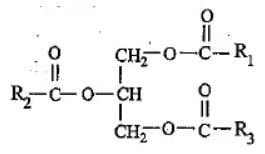Test: Biomacromolecules (NCERT) - NEET MCQ
20 Questions MCQ Test - Test: Biomacromolecules (NCERT)
Which of the following statements is incorrect regarding triglycerides?
The combination of apoenzyme and coenzyme producesenzyme substrate complex
The component present in both nucleotides, and nucleosides is
Which of the following carbohydrates is a disaccharide?
Which of the following statements about amino acids is incorrect?
The most abundant organic molecule present on earth is
Element located in centre of pophyrin ring of chlorophyll is
Enzymes which catalyse reactions involving changes in structure of a molecule (inter conversion of geometrical/positional isomers) are:
Identify the amino acids given below and select the correct option.
Identify the given structural formulae and select the correct option.
Which of the following options correctly identifies the structural formulae shown in figure?
Given, molecular formula belongs to which of the following groups of biomolecules?

How many carbon atoms are generally used in composition of monosaccharides?















